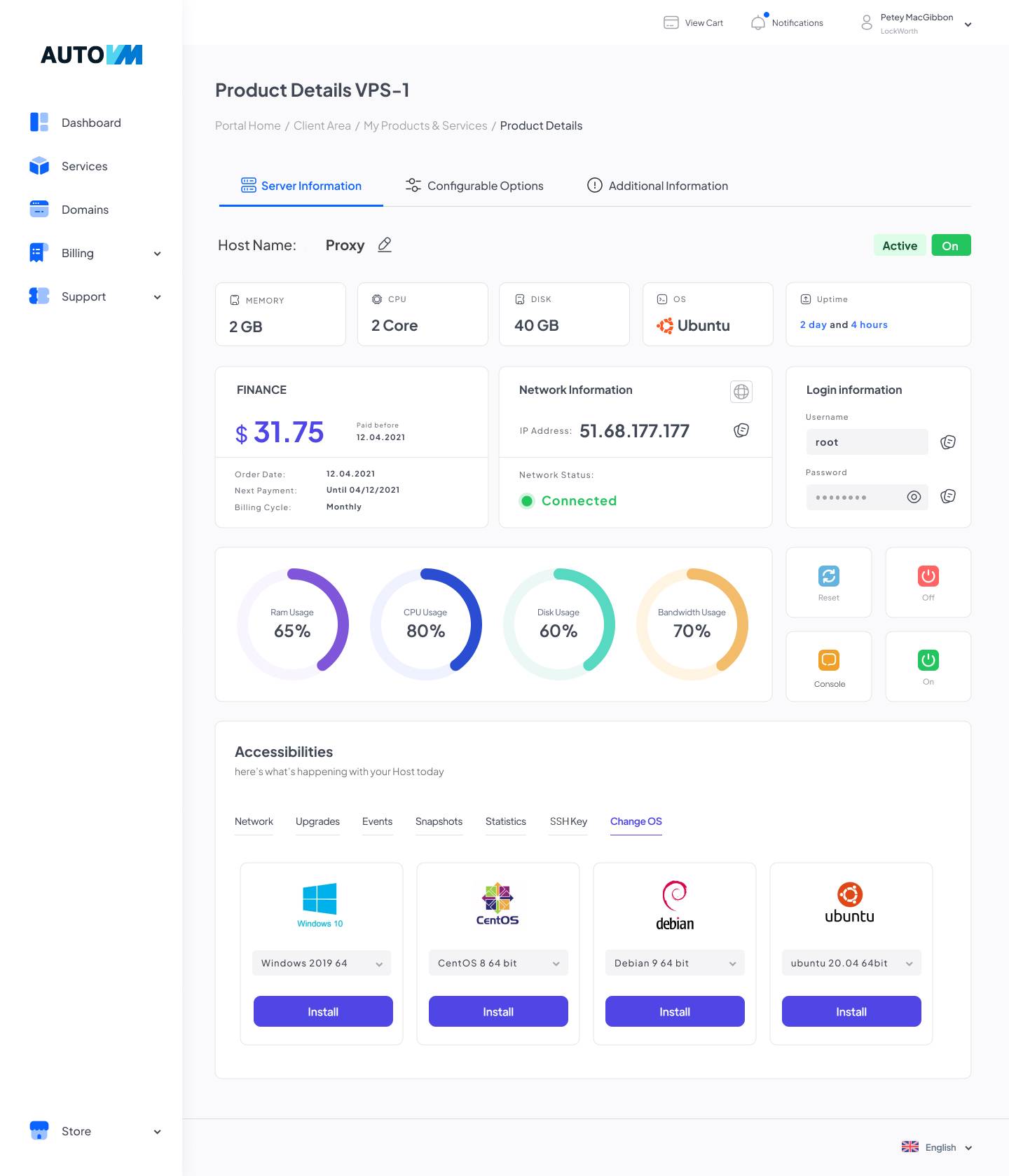Features Tour
-
AutoVM features
-
WHMCS/WISECP
-
VCenter features
WHMCS/WISECP module

By using the WHMCS/WISECP module, companies can automatically sell and deliver virtual servers. When clients order the service, they can select the required operating system. Right after paying the bill, they will receive their VPS login details via email. Additionally, clients can conveniently manage their VPS or downgrade/upgrade it through the WHMCS/WISECP client area. All the features for managing and monitoring virtual machines are available in the WHMCS/WISECP client and admin areas. Furthermore, users can create or delete their service using the Pay-as-you-go payment method, charging their account and benefiting from the hourly payment option.
-
Auto provision VM after payment
-
Change OS
-
Reboot, start, stop options
-
Pay-as-you-go payment method
-
VM console
-
Full log
-
InBound/OutBound Bandwidth usage statistics by graph
-
CPU usage statistics by graph
-
RAM usage statistics by graph
-
Upgrade or downgrade VM

VCenter features

VCenter features

AutoVM platform can manage and automate all tasks related to the vCenter service. Companies can easily manage their server resources, VMs, networks, and other matters using AutoVM. They can also benefit from the features provided by vCenter, such as VSAN, Storage cluster, Storage policy, and vMotion. Additionally, other components are fully compatible with the AutoVM platform. Furthermore, within the AutoVM platform, companies can create pools to manage their servers in a data center. The Node feature enables more accurate management of server resources. Finally, all the features not mentioned, including distributed switch, Bandwidth monitoring, VAPP, Resources pool, and others, are fully supported on AutoVM.
-
Server clustering
-
Storage policy
-
Storage DRS
-
Distributed Switch
-
Resources pool
-
VAPP
-
Node
-
Pool
-
VM snapshot

AutoVM features

AutoVM can automate basic and advanced business tasks in various sectors, such as hosting, cloud services, data centers, telecom, and virtualization-related companies. The AutoVM platform offers multiple benefits, including essential tasks like virtual machine installation and configuration, network configuration, and software installation. In the advanced section, AutoVM provides financial management, hardware resource management for servers, whether located in data centers or not, as well as network monitoring. By utilizing the API service, companies can create their own client area and seamlessly integrate all supported operating system versions for hypervisors or take advantage of the Shell/Bash script feature. It's important to note that all changes made to virtual machines or hypervisors are automatically updated in AutoVM, and all tasks are meticulously logged, facilitating quick troubleshooting resolution.
-
Powerful rest API
-
Install Operating System
-
Config VM IP address
-
VM bandwidth InBound/OutBound monitoring
-
Automatic synchronization
-
Full log service
-
VM console
-
Share IP package between servers
-
Group IPs
-
Task management
-
Node usage history
-
Enable or disable nodes based on available Resources/IPs
-
Share resources among other corporations
-
Hooks
-
Proxy
-
Custom template & application
-
Multi-language support
-
Email layouts
-
Run Shell/Bash script after VM installation
WHMCS module


 AutoVM features
AutoVM features
 WHMCS/WISECP
WHMCS/WISECP
 VCenter features
VCenter features
